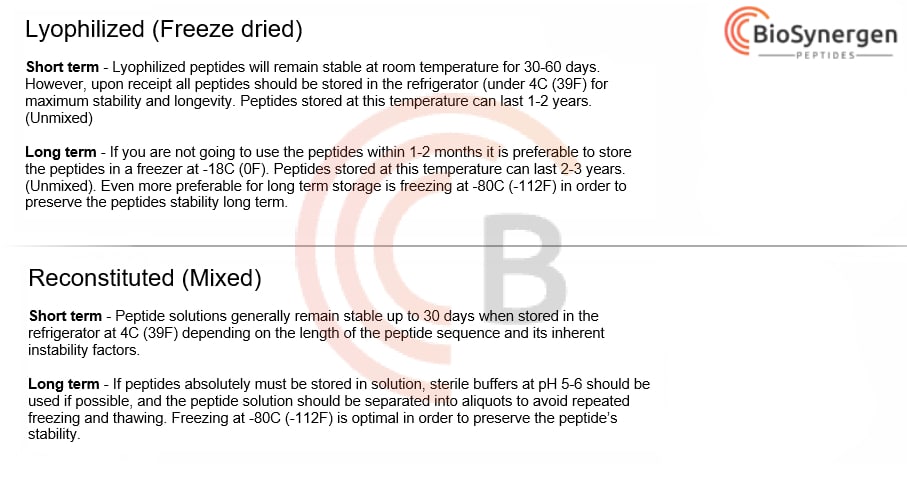What is a Peptide?
Peptides are made up of building blocks called amino acids. When two amino acids join together, a peptide bond is formed. This happens when the carboxyl group of one amino acid reacts with the amino group of another amino acid, with a water molecule being removed in the process.
This bonding process can be repeated to add more amino acids, forming a chain called a polypeptide. The length of the polypeptide can vary, and longer polypeptides can be proteins.
Peptides can be made naturally in living organisms through a process called translation, where genetic information is used to assemble amino acids into a chain on ribosomes.
In the laboratory, peptides can also be created chemically using different techniques. These methods allow scientists to create specific sequences of amino acids to make desired peptides for research or other purposes.
How Are Peptides Formed?
Peptides are made up of building blocks called amino acids. When two amino acids join together, a peptide bond is formed. This happens when the carboxyl group of one amino acid reacts with the amino group of another amino acid, with a water molecule being removed in the process.
This bonding process can be repeated to add more amino acids, forming a chain called a polypeptide. The length of the polypeptide can vary, and longer polypeptides can be proteins.
Peptides can be made naturally in living organisms through a process called translation, where genetic information is used to assemble amino acids into a chain on ribosomes.
In the laboratory, peptides can also be created chemically using different techniques. These methods allow scientists to create specific sequences of amino acids to make desired peptides for research or other purposes.
What are different types of Peptides?
Here are some different types of peptides:
Signal Peptides: These peptides have a specific sequence that targets proteins to be transported to specific locations within or outside the cell.
Hormones: Hormonal peptides act as chemical messengers in the body, regulating various physiological processes. Examples include insulin, glucagon, growth hormone, and oxytocin.
Neuropeptides: Neuropeptides are involved in neurotransmission and play a role in regulating the nervous system. Examples include substance P, enkephalins, and endorphins.
Antimicrobial Peptides: These peptides have antimicrobial properties and help the body defend against pathogens. Examples include defensins and cathelicidins.
Enzyme-Active Peptides: These peptides have enzymatic activity and participate in biochemical reactions. For example, angiotensin-converting enzyme (ACE) inhibitors used to regulate blood pressure.
Cell-Penetrating Peptides: These peptides have the ability to cross cellular membranes and deliver cargo such as drugs or genes into cells. Examples include Tat peptide and penetratin.
Vaccine Peptides: Vaccine peptides are used to stimulate an immune response and develop immunity against specific pathogens. They can be synthetic or derived from pathogens themselves.
Targeted Therapy Peptides: These peptides are designed to specifically target and bind to certain molecules or receptors on cells, often used in targeted cancer therapies.
Structural Peptides: These peptides contribute to the structure and support of tissues. Collagen, for example, is a structural peptide that provides strength and elasticity to connective tissues.
These are just a few examples of the diverse types of peptides found in nature. Peptides have also gained attention in the field of therapeutic development due to their potential as drug candidates for various diseases.
Peptide Reconsitution
Lyophilized Peptides:
Lyophilized peptides are peptides that have been subjected to a process called lyophilization, also known as freeze-drying. Lyophilization is a method used to preserve peptides, proteins, and other biological substances by removing water from them. It involves freezing the substance and then subjecting it to low pressure, which allows the frozen water to sublime directly from the solid phase to the gas phase without passing through a liquid phase.
The process of lyophilization involves several steps. First, the peptide solution is frozen at very low temperatures. Then, the pressure in the system is reduced, and heat is applied to cause the frozen water to sublime. The water vapor is then removed, leaving behind a dry powder of the peptide.
Lyophilized peptides offer several benefits, both in terms of preservation and practicality. The absence of water reduces the risk of degradation, enzymatic activity, and microbial growth. Lyophilized peptides are easier to store, transport, and handle compared to their liquid counterparts. Reconstitution is a simple process of dissolving the lyophilized powder in a suitable solvent. The bioavailability of peptides can be improved through lyophilization, which can also offer cost-effective preservation methods.
Reconstituting Peptides:
When reconstituting peptides for research purposes, it's crucial to follow specific guidelines to ensure accurate preparation and reliable results. Here are the key steps involved in reconstituting peptides for research:
1. Gather Supplies: Collect the lyophilized peptide, a suitable solvent (we recommended using pharmaceutical grade bacteriostatic water), a syringe, and a vial or container for reconstitution, if needed to add more solvent.
2. Calculate Concentration and Volume: Determine the desired concentration and the amount of peptide needed for your research experiment.
3. Reconstitution Process: Use a syringe to draw up the correct volume of the solvent based on your concentration calculations (1ml-3ml, depending on the peptide). Slowly and carefully inject the solvent into the vial containing the lyophilized peptide, directing it along the vial wall to aid dissolution.
4. Gently Swirl and Dissolve: Swirl or gently move the vial to facilitate the dissolution of the peptide. Avoid vigorous shaking or excessive agitation, as it may disrupt the peptide's structure or cause degradation.
5. Allow Complete Dissolution: Give the lyophilized peptide sufficient time to fully dissolve in the solvent. The duration may vary depending on the peptide and its concentration. Ensure that no visible particles or undissolved powder remains in the solution.
6. Store and Handle: Follow the storage instructions (here) to maintain the stability of the reconstituted peptide. Handle the reconstituted peptide solution with care to avoid contamination or degradation.
7. Record and Document: Keep detailed records of the reconstitution process, including the concentration, volume, and any other relevant information. This documentation is essential for accurate data interpretation and research results.
Always consult with experienced researchers or professionals in your field to ensure proper reconstitution techniques for your specific peptide of interest.
Best Practices For Storing Peptides
Proper storage practices are crucial for maintaining the purity of peptides and ensuring accurate laboratory results. Following these best practices can protect against contamination, oxidation, and degradation that may compromise the quality of the peptides and the success of your experiments.
Upon receiving the peptides, store them in a cold and light-free environment. If you plan to use the peptides for your research immediately or within a few days, weeks, or months, short-term then you can refrigerate it under 4°C (39°F). Peptides stored at this temperature can last 1-2 years (Unmixed). Lyophilized peptides can often remain stable at room temperature for several weeks or longer, making room-temperature storage suitable for short-term use (away from sunlight).
For longer-term storage, especially over several years, it is best to keep peptides in a freezer. Freezing the peptides ensures their stability and preserves their quality over extended periods.
To maintain the peptides' stability, it is essential to avoid repeated freeze-thaw cycles. Each cycle can increase the risk of degradation, so minimizing freezing and thawing is crucial for maintaining peptides' stability.
Finally, frost-free freezers should be avoided for peptide storage, as they can cause significant temperature fluctuations during defrosting cycles affecting it's stability. Opt for conventional freezers to ensure consistent and reliable storage conditions. By adhering to these best practices, you can extend the lifespan of your peptides and optimize the success of your experiments.


